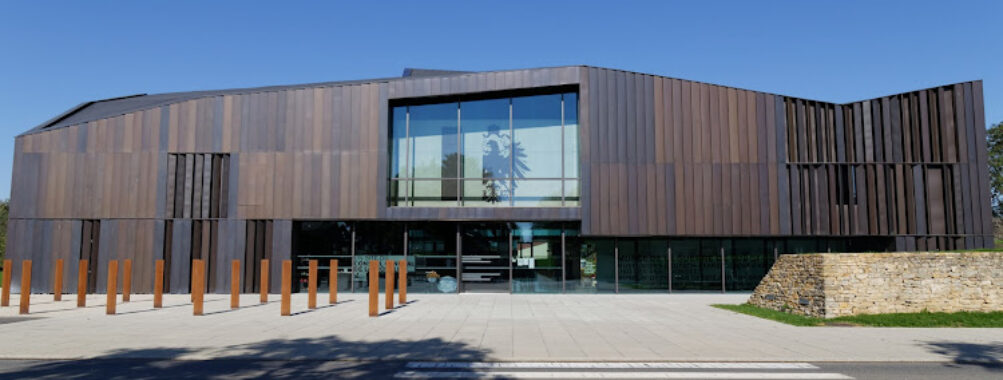
Museum of the War of 1870 and Annexation
Table of Contents
Description
The Museum of the War of 1870 and Annexation in Gravelotte is unlike most history museums you’ll come across in Europe. It dives straight into a conflict that many travelers don’t know much about—the Franco-Prussian War of 1870—and then traces the long shadow it cast over Alsace and Moselle until 1918. Visitors step into a story that feels both intimate and monumental, told through weapons, uniforms, paintings, and fragile documents that survived the chaos of the late 19th century. What makes it stand out is how it doesn’t just focus on battles but also on the everyday lives of men, women, and children caught between shifting borders and clashing identities.
Walking through the galleries, you’ll notice the mix of traditional displays and modern multimedia. One moment you’re staring at a French officer’s jacket with bullet holes, and the next you’re watching a projection that explains how the annexation shaped local culture. The museum doesn’t shy away from the heavy stuff—it’s about loss, resilience, and the messy business of belonging to one nation one day and another the next. But it also feels very human, and that’s what keeps it from being just another military museum. Some visitors find it overwhelming, others find it deeply moving, but very few leave without learning something new.
Key Features
- Unique in Europe: the only museum fully dedicated to the Franco-Prussian War of 1870 and the annexation of Alsace-Moselle.
- Extensive collection of authentic uniforms, weapons, artillery, and personal items from both French and German sides.
- Artworks and propaganda posters that reveal how people were persuaded, inspired, or even manipulated during the conflict.
- Multimedia installations and audiovisual presentations that help bring the 19th century to life.
- Focus on the human angle—stories of civilians, soldiers, and families navigating war and identity shifts.
- Wheelchair accessible facilities, including entrance, restrooms, and parking.
- Free parking lot available on site, making it convenient for road-trippers.
- Family-friendly approach, with exhibits and explanations that engage children without watering down the history.
Best Time to Visit
The museum is open year-round, but the experience changes depending on the season. If you’re planning to combine the visit with exploring the surrounding countryside, late spring and early autumn are ideal—the weather is mild, the landscapes are lush, and you won’t have to deal with peak summer crowds. Winter visits can be atmospheric too, especially if you enjoy quieter galleries and the chance to linger longer at each exhibit without feeling rushed. Personally, I’d avoid high summer afternoons; the museum itself is comfortable, but the drive and parking can be busier than usual. If you’re a history buff, check the calendar for special exhibitions or commemorative events—they add a lot of depth to the standard displays.
How to Get There
Gravelotte is located in the Moselle region of northeastern France, and reaching the museum is fairly straightforward. If you’re driving, the free on-site parking makes it an easy stop on a road trip through Lorraine. Travelers coming from Metz will find it’s just a short drive west, while those relying on public transportation can catch regional buses that connect nearby towns to Gravelotte. Coming from farther afield, the nearest major train hub is Metz, which links to Paris and other French cities by high-speed rail. From there, a rental car or local bus will get you the rest of the way. Honestly, if you’re traveling with kids or a group, having your own car is the most convenient option.
Tips for Visiting
First off, give yourself more time than you think. A quick walk-through might only take an hour, but if you actually want to absorb the details—the uniforms, the artwork, the political documents—you’ll need at least two to three hours. And if you’re like me and get caught up reading every single panel, plan half a day. Comfortable shoes are a must, because while it’s not a massive museum, you’ll be on your feet a lot.
Photography is usually allowed, but always double-check the signs. I found that snapping a few photos of the uniforms helped me remember the differences between French and German styles, but honestly, some of the exhibits are better appreciated without a lens between you and the object. If you’re traveling with kids, prepare them a bit beforehand—explain that they’re about to see real artifacts from a war most people don’t talk about much. It makes the visit more meaningful and less abstract for them.
Accessibility is well thought out, which is refreshing. Wheelchair users will find the entrances and restrooms accommodating, and the layout is fairly easy to navigate. There isn’t a restaurant on site, so plan your meals accordingly. I’d recommend bringing a snack or heading to Metz afterward for a proper meal—it’s close enough and has plenty of good options.
One last thing: don’t rush out once you’ve finished the exhibits. Step outside, look at the surrounding area, and remember this was once a battlefield. It’s quiet now, but knowing what happened there gives the landscape a weight you can actually feel. That’s the kind of memory that stays with you long after you’ve left.
Location
Places to Stay Near Museum of the War of 1870 and Annexation
Find and Book a Tour
Explore More Travel Guides
No reviews found! Be the first to review!